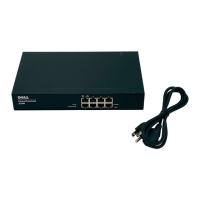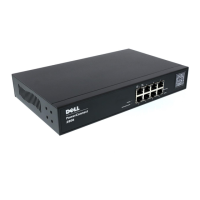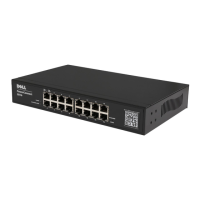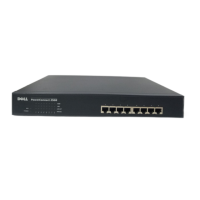Troubleshooting 17
Link speed LED indicates a lower
speed than expected.
Incorrect cable grade. Ensure that you are using
Category 5 cable or better for all
10Base-T and 100Base-T links, or
Category 5e for 1000Base-T links.
Damaged cable. Test any cables that have kinks,
sharp bends, or appear to be
damaged.
The cable’s maximum distance
has been exceeded.
10Base-T, 100Base-T, and
1000Base-T cables have
limitations for link lengths. Move
the connected device closer to the
switch and use a shorter cable.
Link LED is lighted, but the
activity (ACT) LED does not
blink.
There is no Ethernet traffic on the
link. The LED blinks only when
traffic is being passed to or sent
from a device that is connected to
the port.
No action required.
The attached device is not
configured correctly.
Verify that the port or NIC on the
attached device is operating
properly.
Link LED is lighted and the
FDX/HDX LED blinks
occasionally.
This can be normal link activity.
Some collisions take place during
normal operation.
No action required.
Link LED is lighted and the
FDX/HDX LED blinks frequently.
Mismatched duplex mode. Ensure that any devices
connected to the switch are set to
automatically detect and set port
speed and duplex settings.
The link is reaching its maximum
capacity.
Resegment the network to
decrease the number of users on
the link.
Table 2-1. Basic Troubleshooting (continued)
Problem Probable Cause Corrective Action

